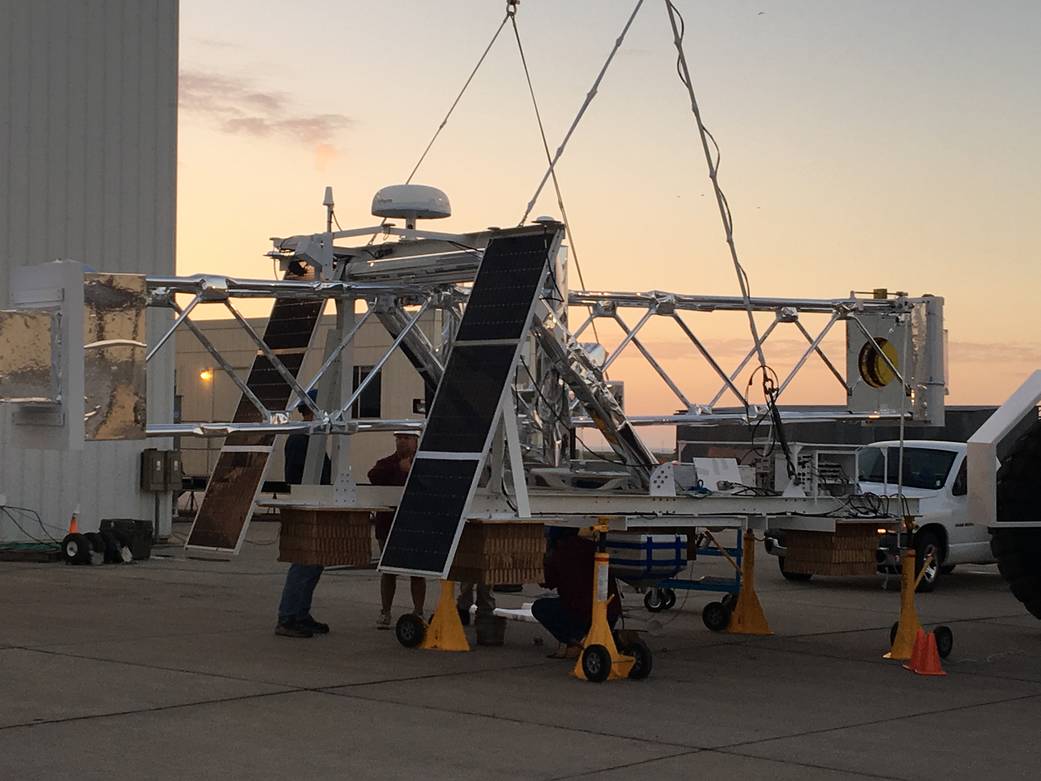NASA Columbia Scientific Balloon Facility technicians conduct a compatibility test Sept. 6 on the 25-foot X-Calibur payload, which is set to launch in September on a 40-million-cubic-foot NASA scientific balloon from the agency’s launch site at Fort Sumner, N.M. X-Calibur is an X-ray telescope mounted to the Wallops Arc Second Pointer (WASP) seeking to observe two black holes, a crab nebula, and an expanding neutron star during a scheduled hours-long mission flying at at an operational float altitude of 105,000 feet. The mission is a collaboration led by principal investigator Henric Krawczynski, University of Washington-St. Louis. NASA’s Goddard Space Flight Center is providing mirror and pointing calibration expertise and NASA’s Wallops Flight Facility is providing the WASP sub-arcsecond pointing system and payload support systems as well as all balloon operations support. Brookhaven National Lab in Upton, New York, is also a mission collaborator. NASA’s scientific balloons offer low-cost, near-space access for suspended loads weighing up to 8,000 pounds to conduct technology demonstration tests as well as scientific investigations in fields such as astrophysics, heliophysics and atmospheric research. Depending on the goals and objectives of a specific mission, balloon flight durations can run hours to multiple days or weeks for longer-term exposures and data collection. The most common size of NASA’s balloons is 40 million cubic feet, or a volume equivalent to more than 130 Goodyear blimps (the newest model of a Goodyear Blimp measures 297,527 cubic feet). When fully inflated, a football stadium could fit inside the balloon.
2 min read



























